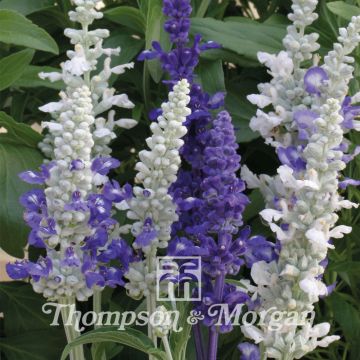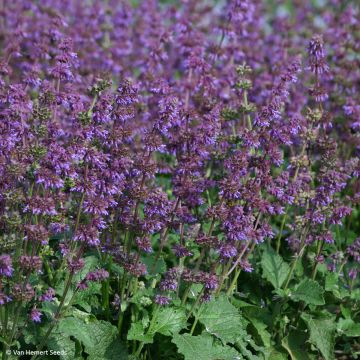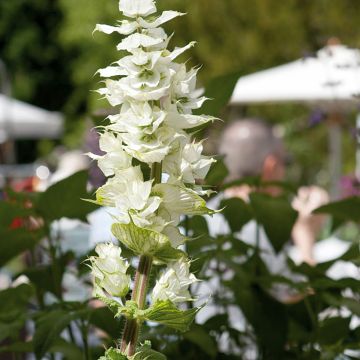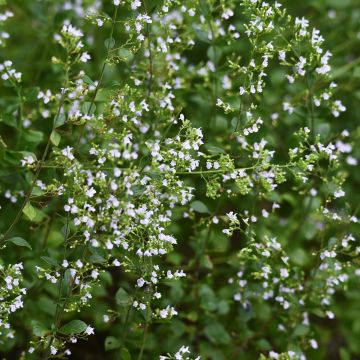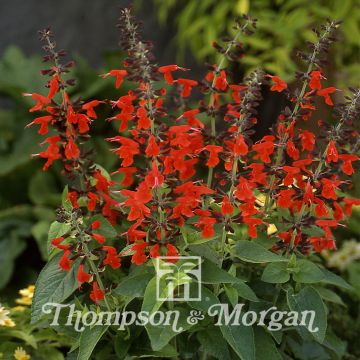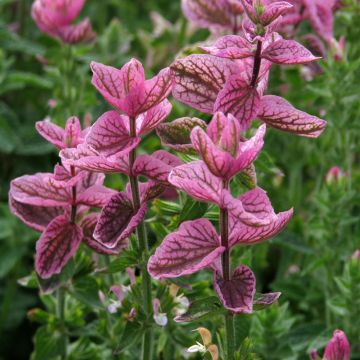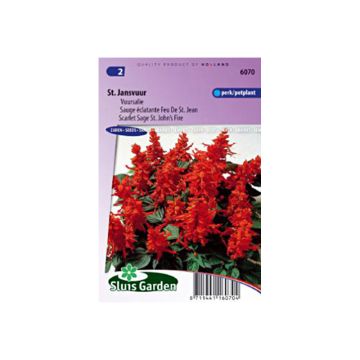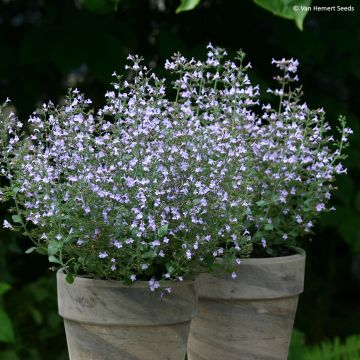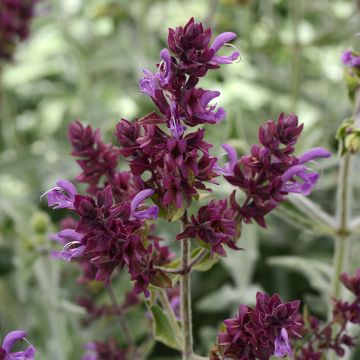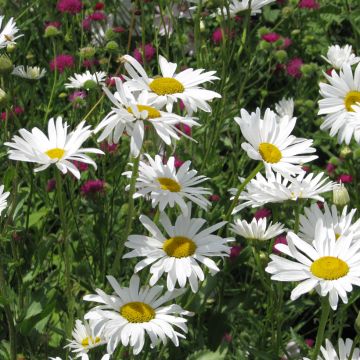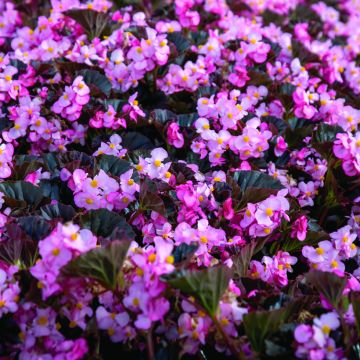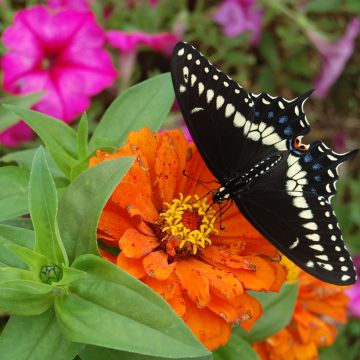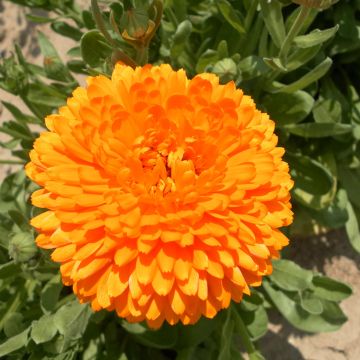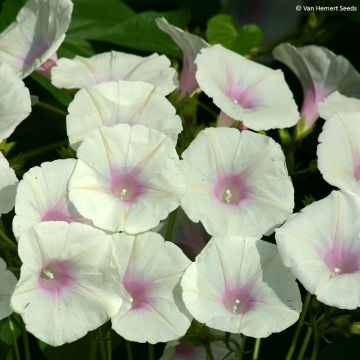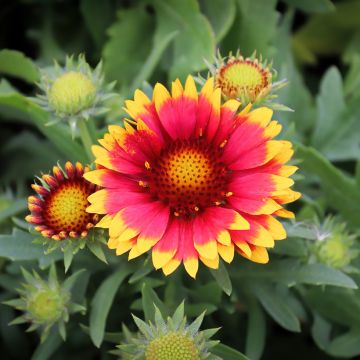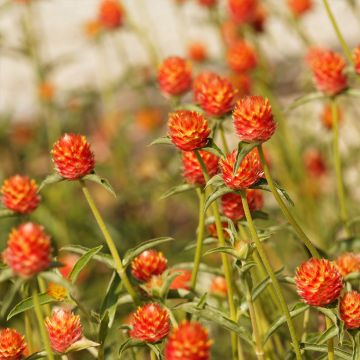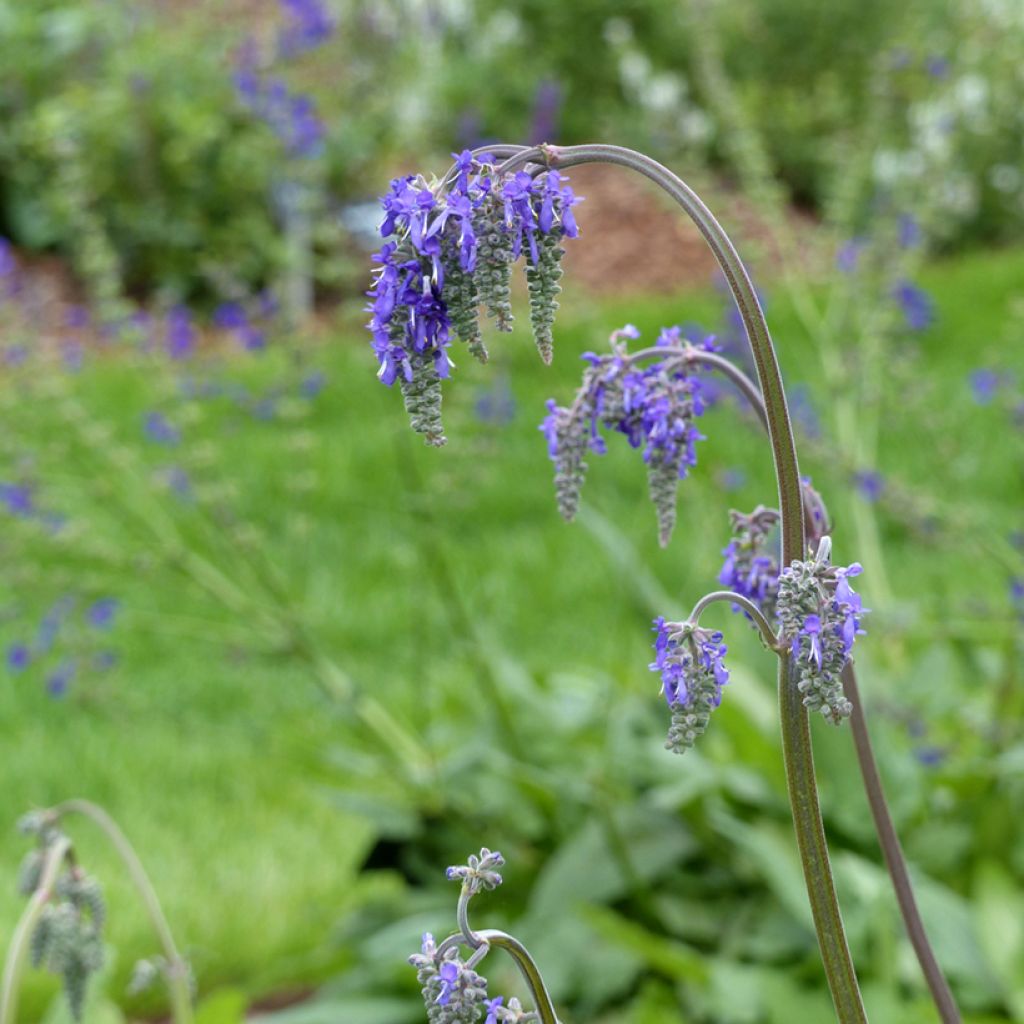

Salvia nutans seeds - Nodding Sage
Salvia nutans seeds - Nodding Sage
Salvia nutans
Nodding Sage, Bowing Sage
This item cannot be shipped to the selected country
Dispatch by letter from €3.90
Delivery to Corse prohibited
More information
Schedule delivery date,
and select date in basket
This plant carries a 6 months recovery warranty
More information
We guarantee the quality of our plants for a full growing cycle, and will replace at our expense any plant that fails to recover under normal climatic and planting conditions.
Seed-only orders are dispatched by sealed envelope. The delivery charge for seed-only orders is €3.90.
Delivery to Corse prohibited: UE law prohibits the import of this plant from mainland France to Corse as part of the fight against Xylella fastidiosa. Please accept our sincere apologies.
More information
Does this plant fit my garden?
Set up your Plantfit profile →
Description
The Slender Sage, in Latin Salvia nutans, is a perennial plant which is interesting for its graceful and prolonged flowering as well as its great resistance to cold and drought. Originating from Eastern Europe and Central Asia, it adapts well to harsh environments. It is recognised by its branched floral stems adorned with blue-violet flowers whose tops delicately lean towards the ground. It will bring a wild and natural touch to flower beds. It thrives in the sun in any well-drained soil.
Belonging to the Lamiaceae family, Slender Sage (Salvia nutans) originates from the steppes of Eastern Europe, Russia, and Asia. It is mainly found in dry and sunny areas, where it grows in well-drained soils. This perennial, with an upright habit and slender stems, reaches between 50 and 70 cm high in flower, or even more. It forms a basal rosette of puckered leaves, of irregular size, which do not persist in winter. Its leaves are generally triangular, 5 to 10 cm long, medium to dark green, and slightly velvety to the touch. Flowering occurs from June to late September, depending on the climate. It takes the form of incredibly graceful branched floral stems. Each branching carries a spike composed of bright bluish-purple tubular flowers, leaning downwards. These flowers measure about 1 to 2 cm. The very hardy Slender Sage can withstand temperatures down to -25°C. This plant also copes well with dry periods. Its roots don't like excess moisture.
Salvia nutans thrives in the sun in flower beds and borders with soil that does not retain excess water. Its natural appearance blends perfectly with light grasses like Feather Grass or Muhlenbergia capillaris which blooms pink in late summer. Also consider Panicled Baby's Breath 'Snow Flake' which forms clouds of small white flowers and the Persian Cornflower (Centaurea dealbata) whose bright pink flowers complement the purple and grey tones of the Slender Sage.
With over 900 species of annuals, perennials, and bushes, distributed all over our planet, except in very cold regions and tropical forests, the Salvia genus is the richest in the Lamiaceae family. The name Salvia, dating back to Roman times, derives from the Latin salvus "healthy" alluding to the medicinal virtues of common sage.
Report an error about the product description
Flowering
Foliage
Plant habit
Botanical data
Salvia
nutans
Lamiaceae
Nodding Sage, Bowing Sage
Salvia pilosa, Salvia pseudopendula, Salvia praemontana, Salvia hastata, Salvia acutifolia, Salvia betonicifolia, Salvia cremenecensis, Salvia cernua, Salvia ruthenica,Sclarea nutans
Eastern Europe
Other Salvia seeds
Planting and care
Sowing of Salvia nutans: the seeds should be sown in spring, after the last frosts. Prepare trays or small pots with a light and well-drained substrate, such as a mix of compost and sand. Sow the seeds on the surface, as they require light to germinate. Keep the soil slightly moist by spraying with water, but avoid saturating it. Place the pots in a warm place, around 20-25°C, and ensure they receive indirect light. Germination takes between 10 and 21 days depending on the conditions.
Once the seedlings have developed some leaves, you can transplant them into the garden, spacing them 30 cm apart to ensure good air circulation. The nodding sage prefers very sunny locations and only thrives in very well-drained soils. It is very drought-tolerant once established, and it withstands cold temperatures down to -25°C. Remember to mulch around the plants to protect the roots from excessive moisture in winter.
Sowing period
Intended location
This item has not been reviewed yet - be the first to leave a review about it.
Flower seeds
Haven't found what you were looking for?
Hardiness is the lowest winter temperature a plant can endure without suffering serious damage or even dying. However, hardiness is affected by location (a sheltered area, such as a patio), protection (winter cover) and soil type (hardiness is improved by well-drained soil).

Photo Sharing Terms & Conditions
In order to encourage gardeners to interact and share their experiences, Promesse de fleurs offers various media enabling content to be uploaded onto its Site - in particular via the ‘Photo sharing’ module.
The User agrees to refrain from:
- Posting any content that is illegal, prejudicial, insulting, racist, inciteful to hatred, revisionist, contrary to public decency, that infringes on privacy or on the privacy rights of third parties, in particular the publicity rights of persons and goods, intellectual property rights, or the right to privacy.
- Submitting content on behalf of a third party;
- Impersonate the identity of a third party and/or publish any personal information about a third party;
In general, the User undertakes to refrain from any unethical behaviour.
All Content (in particular text, comments, files, images, photos, videos, creative works, etc.), which may be subject to property or intellectual property rights, image or other private rights, shall remain the property of the User, subject to the limited rights granted by the terms of the licence granted by Promesse de fleurs as stated below. Users are at liberty to publish or not to publish such Content on the Site, notably via the ‘Photo Sharing’ facility, and accept that this Content shall be made public and freely accessible, notably on the Internet.
Users further acknowledge, undertake to have ,and guarantee that they hold all necessary rights and permissions to publish such material on the Site, in particular with regard to the legislation in force pertaining to any privacy, property, intellectual property, image, or contractual rights, or rights of any other nature. By publishing such Content on the Site, Users acknowledge accepting full liability as publishers of the Content within the meaning of the law, and grant Promesse de fleurs, free of charge, an inclusive, worldwide licence for the said Content for the entire duration of its publication, including all reproduction, representation, up/downloading, displaying, performing, transmission, and storage rights.
Users also grant permission for their name to be linked to the Content and accept that this link may not always be made available.
By engaging in posting material, Users consent to their Content becoming automatically accessible on the Internet, in particular on other sites and/or blogs and/or web pages of the Promesse de fleurs site, including in particular social pages and the Promesse de fleurs catalogue.
Users may secure the removal of entrusted content free of charge by issuing a simple request via our contact form.
The flowering period indicated on our website applies to countries and regions located in USDA zone 8 (France, the United Kingdom, Ireland, the Netherlands, etc.)
It will vary according to where you live:
- In zones 9 to 10 (Italy, Spain, Greece, etc.), flowering will occur about 2 to 4 weeks earlier.
- In zones 6 to 7 (Germany, Poland, Slovenia, and lower mountainous regions), flowering will be delayed by 2 to 3 weeks.
- In zone 5 (Central Europe, Scandinavia), blooming will be delayed by 3 to 5 weeks.
In temperate climates, pruning of spring-flowering shrubs (forsythia, spireas, etc.) should be done just after flowering.
Pruning of summer-flowering shrubs (Indian Lilac, Perovskia, etc.) can be done in winter or spring.
In cold regions as well as with frost-sensitive plants, avoid pruning too early when severe frosts may still occur.
The planting period indicated on our website applies to countries and regions located in USDA zone 8 (France, United Kingdom, Ireland, Netherlands).
It will vary according to where you live:
- In Mediterranean zones (Marseille, Madrid, Milan, etc.), autumn and winter are the best planting periods.
- In continental zones (Strasbourg, Munich, Vienna, etc.), delay planting by 2 to 3 weeks in spring and bring it forward by 2 to 4 weeks in autumn.
- In mountainous regions (the Alps, Pyrenees, Carpathians, etc.), it is best to plant in late spring (May-June) or late summer (August-September).
The harvesting period indicated on our website applies to countries and regions in USDA zone 8 (France, England, Ireland, the Netherlands).
In colder areas (Scandinavia, Poland, Austria...) fruit and vegetable harvests are likely to be delayed by 3-4 weeks.
In warmer areas (Italy, Spain, Greece, etc.), harvesting will probably take place earlier, depending on weather conditions.
The sowing periods indicated on our website apply to countries and regions within USDA Zone 8 (France, UK, Ireland, Netherlands).
In colder areas (Scandinavia, Poland, Austria...), delay any outdoor sowing by 3-4 weeks, or sow under glass.
In warmer climes (Italy, Spain, Greece, etc.), bring outdoor sowing forward by a few weeks.

































